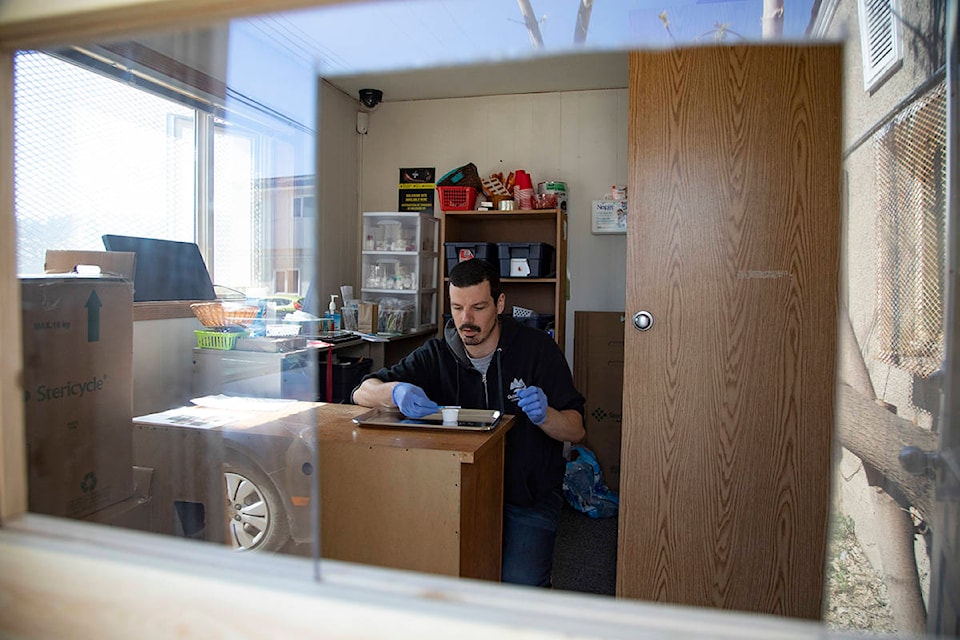The Yukon Coroner’s Service has confirmed three drug overdose deaths and one probable overdose death since mid-January.
“Drug overdoses continue to take the lives of Yukoners at an alarming rate,” said Heather Jones, Yukon’s chief coroner, in a press release.
The Yukon has not been exempt from the fentanyl overdose crisis sweeping Canada and exacerbated by pandemic-imposed isolation.
In 2020, the Yukon saw 14 drug overdose deaths, eight of which were fentanyl-based. Those numbers are more than double what was seen in 2019, Jones says.
Fentanyl is a powerful synthetic drug found in street opioids. Jones said the three recent deaths were caused by drugs containing “varying levels of cocaine and fentanyl in high concentration.”
All four of the recent deaths appear to be in people who were using drugs alone, she added.
Yukon RCMP said in a press release that officers attended 23 drug overdoses in 2020. Police have also attended an additional 46 calls for service where fentanyl was suspected.
“The possible consumption of drugs contaminated with fentanyl, and potential overdose, is very real in our territory. The consequences are severe,” said Chief Superintendent Scott Sheppard.
Brontë Renwick-Shields, executive director of Blood Ties Four Directions Centre, says the unsafe street drug supply has been a pervasive problem since 2016.
“We continue to be in a health crisis where we don’t know what is necessarily in the substances that we’re using, and we don’t have a safe supply access to these drugs,” she said.
“This isn’t new, the overdose crisis has been continuing for the past five years, and even prior to that.”
The pandemic and ensuing border restrictions have further hindered the street drug supply, she explained. Pandemic isolation has also contributed to the high number of deaths in the last year.
“We do know that people are often more isolated at this time, and we believe that people using alone is generally a significant increase in risk of overdose,” Renwick-Shields said.
Blood Ties is encouraging drug users not to take drugs alone as a first step in mitigating risk.
“We encourage folks to either have someone with you, or who can reach you quickly, who is aware that you might be using substances at that time, and who can respond and has a naloxone kit on them,” Renwick-Shields said.
Naloxone is a medication that can temporarily reverse the effects of an opioid overdose. Naloxone kits and training are available at Blood Ties and the Blood Ties outreach van, which runs seven nights a week from 5:30 to 9:30 p.m. Kits are also available at health centres, pharmacies, the emergency shelter and substance use services.
Training to use naloxone only takes about 15 minutes. Trainees will learn how to recognize the signs and symptoms of overdose, administer naloxone, provide rescue breaths and ensure 9-1-1 is called.
Renwick-Shields is also recommending that drug users get their drugs tested at Blood Ties.
Blood Ties will test drugs for fentanyl, as well as benzodiazepine, a sedative used pharmaceutically to treat anxiety.
Some people abuse benzos intentionally, Renwick-Shields explained. Last summer, however, benzos were increasingly found as a contaminant in street drugs, particularly opioids.
“They can cause someone to lose consciousness for an extended period of time, and so they’re not generally sought out, but instead are unintentionally contaminating a drug.”
Benzos aren’t an opioid, so an overdose can’t be treated with naloxone.
Renwick-Shields said that multiple different street drugs can be contaminated with fentanyl or benzos.
“We will (test) anything like pills, rocks or powder. There are some substances where we may see more likelihood of potential contamination, and generally those are opioids,” she said.
“It’s hard to say if one drug is more likely than the other to contain it, so we just encourage anyone who is consuming a substance to get it tested and to carry naloxone.”
Contact Gabrielle Plonka at gabrielle.plonka@yukon-news.com
